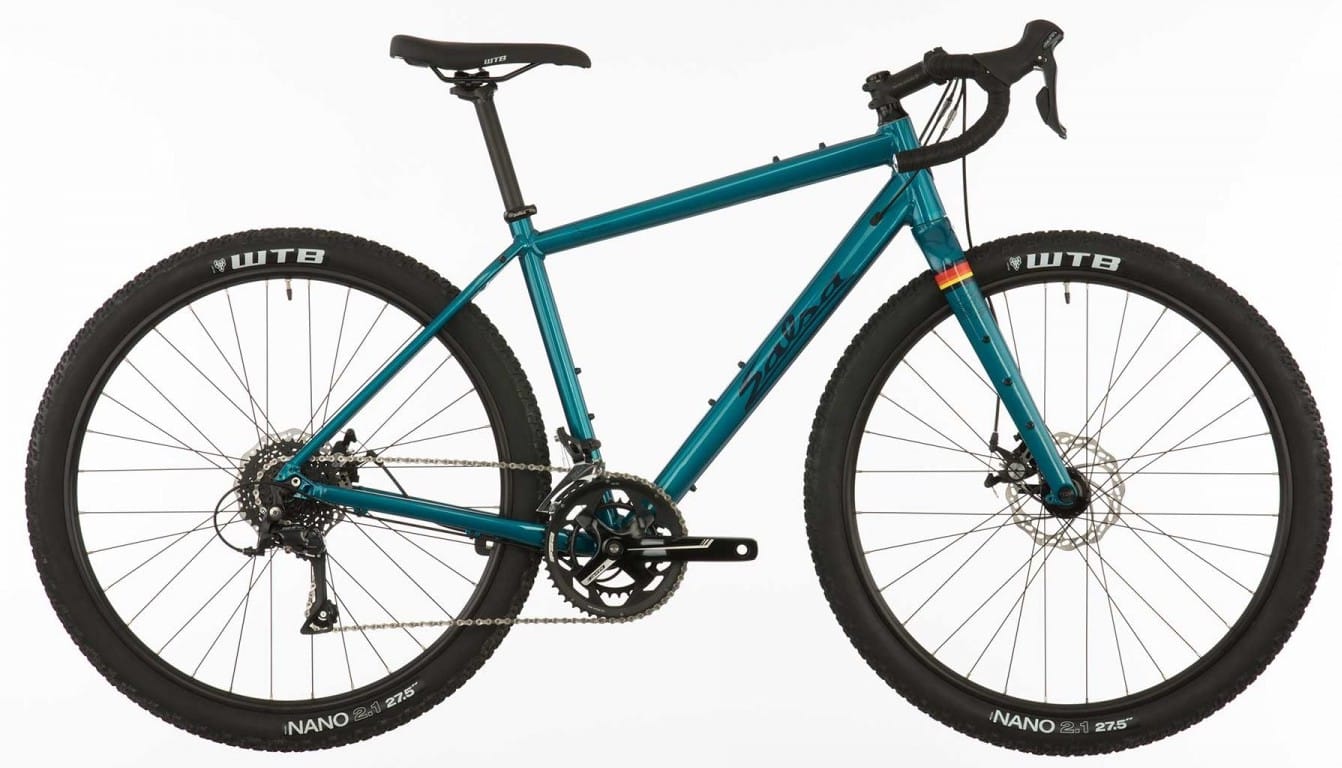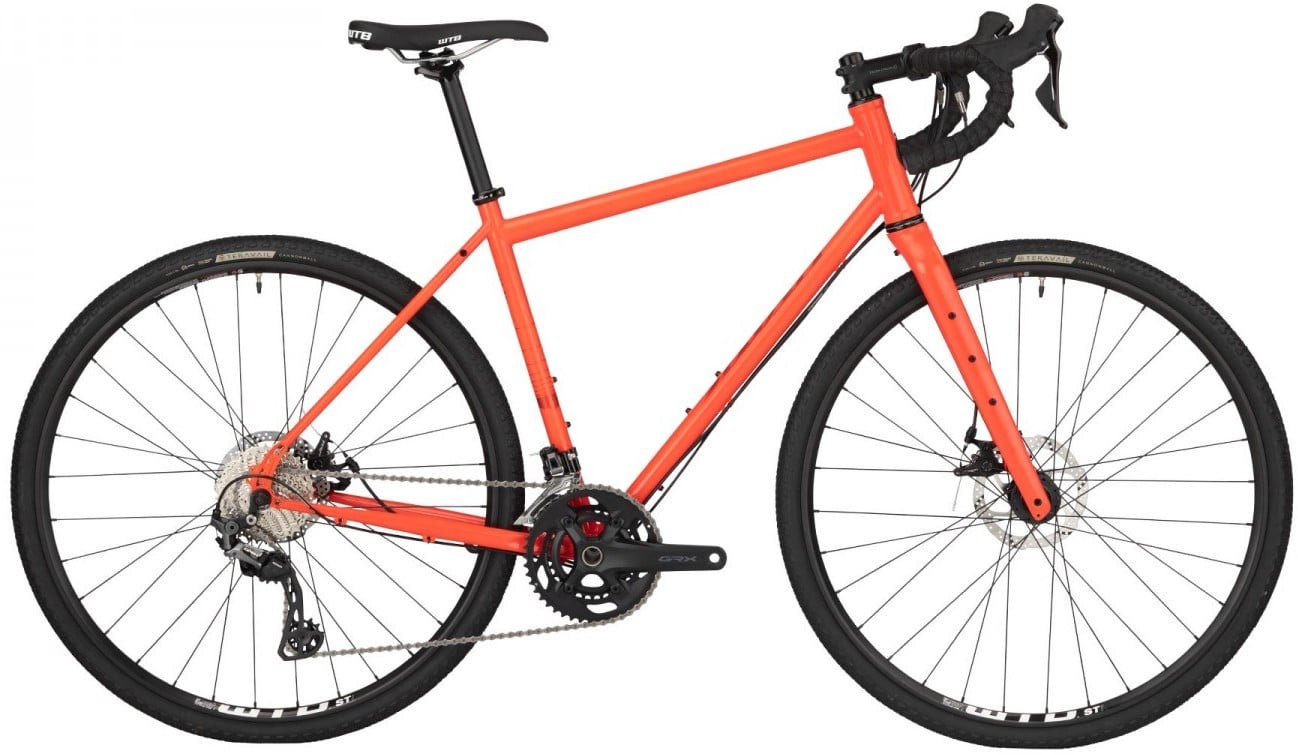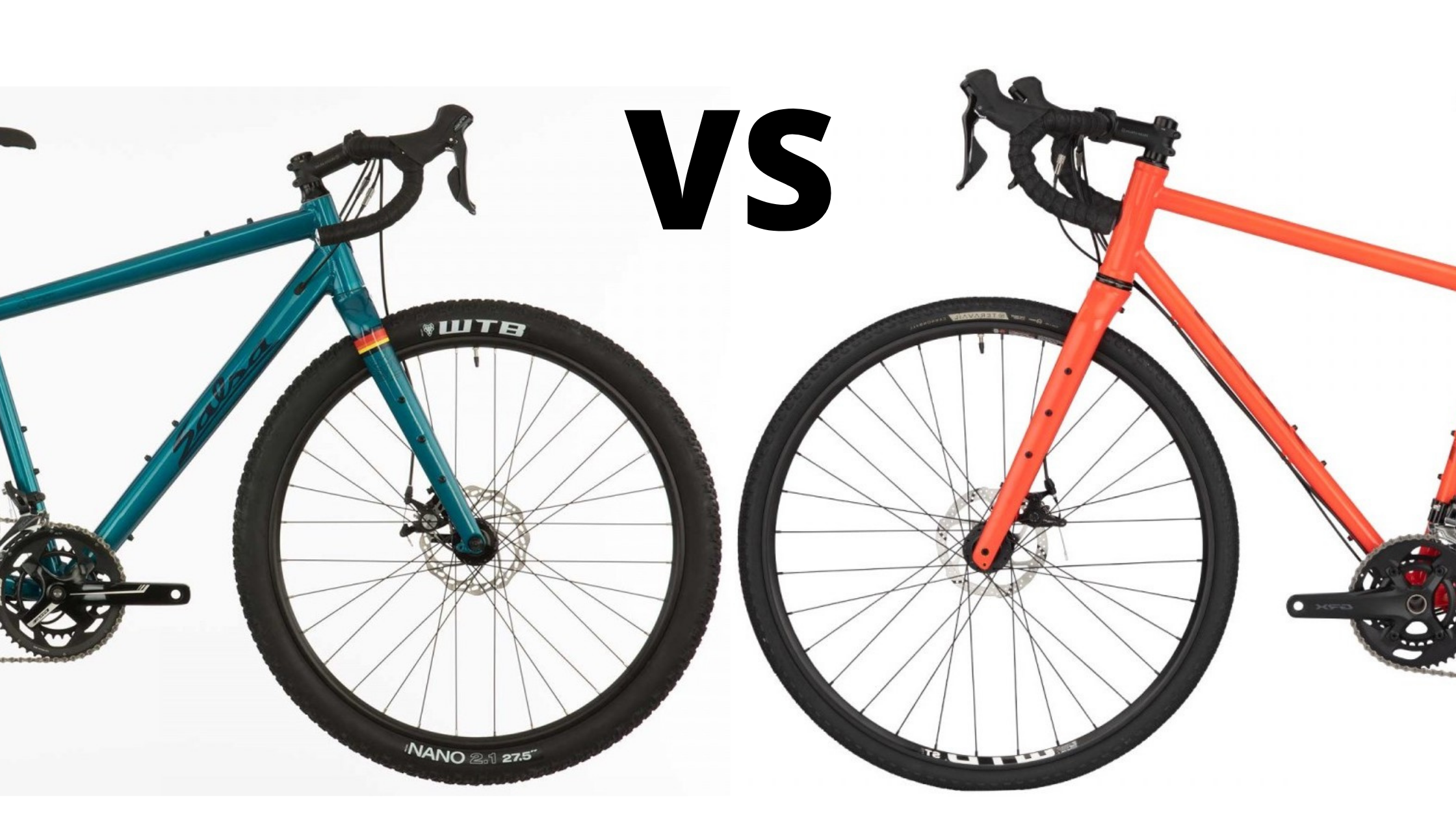A Salsa gravel bike bike battle! Well which bike is best? We are going to compare these two iconic gravel bikes side by side and see what the difference is between each. One is made from steel the other alloy. When it comes to price the Journeyman is the best budget option coming in at $1,100 cheaper at $1,199 when the Vaya is $2,299. But what really is the difference and which one is best for you and your riding goals?
If you are just getting started gravel biking and looking for a beginner option and you have a tight budget, and want to explore MTB trails and off the beaten track, look no further than the Journeyman. But if you have some more cash to spend, looking for more of a touring bike to run panniers and need an extremely upright and comfortable geometry. And also want much higher grade components then I would opt for the Vaya!
| Salsa Vaya 600 | Salsa Journeyman Sora | |
| MSRP | $2,299 | $1,199 |
|---|---|---|
| Online Price | $2,299 | $1,099 |
| Category | Gravel | Gravel |
| Weight | 25.0 lbs / 11.3 kg | 26.0 lbs / 11.8 kg |
| Frame | Steel | Aluminum |
| Fork | Carbon | Carbon |
| Wheel / Tire Size | 700c x 38c | 650b x 2.1″ |
| Wheel Material | Aluminum | Aluminum |
| Brake Type | Mechanical Disc | Mechanical Disc |
| Groupset | GRX 800, 105 | Sora |
| Drivetrain | 2 × 11 | 2 × 9 |
| Stack/Reach Ratio | 1.62 | 1.54 |
| Climbing Gear Inches | 24.18″ | 23.93″ |
| Highest Gear Inches | 114.87″ | 113.66″ |
| Gear Ratio | 0.88 to 4.18 | 0.88 to 4.18 |
But it is a little more complex than that! So keep reading and we will see if the Journeyman is still a good option if you want an ultimate budget bikepacking/gravel bike!
The Journeyman is a bike best suited for a range of riding, but is most at home for all-road, gravel and light touring rides. While the Vaya is for any road, gravel or light touring.
Salsa Journeyman

The main difference between the two bikes is the build materials. The Journeyman is made from an aluminium frame but they both have carbon forks. But different ones. This bike comes with the Fantail Deluxe Fork with 3 pack mounts.
You do get a much more lower quality groupset with the Journeyman. (They do have the Apex option though which is still considered, mid-range). The 2 x 9 Sora groupset (most popular option for the Journeyman) is modest. However both bikes come with mechanical disc brakes. But the Journeyman comes with the Promax DSK-330R flat mount 160 mm brakes.
This groupset gives you a FSA Vero Pro Adventure, 46/30t crank and SunRace 9-speed 11-34t cassette. Which should result in the same gear ratio as the vaya. but has both bikes come with different wheels sizes and tires, the climbing gear and highest gears will be slightly different. Because the Journeyman’s tires are wider with 2.1″ on the 650b wheel, it has a slighty better 23.93″ climbing gear and slightly less capable 113.66″ highest gear, when compared to the Vaya. But they both still have that same 0.88 to 4.18 gear ratio.
As you can tell the Journeyman can fit wider tires, thanks to the 650b wheels. It can fit up to 700 x 50mm tires or 650b x 2.2″. This is one of the characteristics that gets me more interested in the Journeyman! wider tires means better off-road capabilities! Which makes the Journeyman more preferable for off-road bikepacking, when you plan to ride mostly on trails, MTB single track and other similar terrain.
Both bikes come with the same Salsa Cowbell handlebars which has a 12° flare angle. The journeyman has the Formula, 32h, 100mm, WTB STP i23 TCS 650b, 2.0mm spokes, brass nipples rims. Which is the same spoke hole count as the Vaya but 650b and not 700c. Also this is one of the main components that makes these bikes suited for “light-touring” as they have less spokes than a touring bikes wheels, of typically 36.
The Journeyman is a little heavier at 26.0 lbs / 11.8 kg. When it comes to geometry both bikes have some similarities. With the same; top tube length, seat tube length, rake, standover height and trail. The differences come in the Journeyman’s shorter chainstay at 440 mm (54 cm frame), making it more chill in the rear, less stable in the rear when compared to the Vaya. And the Journeyman has a lower stack/reach ratio at 1.54, which is still upright enough for comfortable long days in the saddle. Honestly this ratio works out better for off-road bikepacking then does the Vaya’s 1.62 stack/reach ratio.
Want to learn more about understanding bike geometry? Read this article which goes through all the jargon and what it means for a comfortable ride!
Also the front centre (space from bottom bracket to fork) is 4 mm longer on the Journeyman. Which means that little extra room for gear to be mounted on those triple mounts on the fork. Allowing more clearance for pedalling. And potentially extra room to run gravel panniers up front.
Also the Journeyman has top tube mounts while the Vaya does not. Which gives it that little extra gear mounting capability. Again making it the preferred bike for bikepacking adventures.
Salsa Vaya

However it seems the steel frame of the Vaya is more preferable for loaded tours, but you also get the carbon Waxwing fork for extra suppleness. Surprisingly the Vaya is lighter than the Journeyman, considering it is a steel bike, 500 grams lighter at 25.0 lbs / 11.3 kg.
You get much better and high-end components on the Vaya. You could opt for the SRAM Apex option for the Journeyman but even that does not compare to the 2 x 11 GRX 800, 105 groupset. Which has a Shimano RX600-11, 46/30t crank and Shimano HG700-11 11-34t. Because the vaya comes with the Teravail Cannonball 700c x 38mm Durable, Tubeless-Ready tires. With the WTB Serra Hub 12 x 100mm, WTB ST i19 TCS 2.0 700c 32h rims. The bike has a 24.18″ granny gear and 114.87″ highest gear. That’s a 0.88 to 4.18 gear ratio.
What about tire clearance? The Vaya can fit up to 700c x 50mm tires or 700c x 45mm with fenders. But from my research only 700c and not 650b wheels, are not recommended for this build.
The Vaya has a much more upright riding position compared to the Journeyman with a 1.62 stack/reach ratio for a 54 cm frame, which is 0.08 ratio longer than the Journeyman. The trails on both bikes are identical at 64 mm which means they both handle really predictable in the front and rather stable. While the Vaya has a 10 mm longer chainstay at 450 mm. Making it both chill and stable.
The wheelbase on the Vaya is also 5 mm longer. But the main differences is in that chainstay length. Which makes the Vaya more suited for bike touring with rear panniers with that 10 mm extra room for pannier clearance. Both bikes both have rear rack mounts though. But the Vaya is probably more preferable if you mostly plan to ride with rear panniers.
Again both bikes have mechanical disc brakes. Which is said to be best for touring in countries where parts are harder to find. But the Vaya has the
TRP Spyre-C, 160mm brakes.
Ideally the Vaya is better if you plan to go on mostly road adventures and need a stable light-touring bike. With the higher end compoents you get better performance to hold up to the demands of any type of road surface adventures, from pavement to gravel to dirt. The Salsa Vaya is priced at $2,299
Overall for the price of the Journeyman and the slightly better climbing gear thanks to the 650b wheels which also offer more tire clearance. Make it a better option out of the two in my opinion. Yes, not the better quality components out of the two. But it is still a capable bike.
One thing I would prefer was that Journeyman to be a steel frame and not alloy. Which is what I like better about the Vaya. But for my personal riding needs which is mostly off-road and bikepacking. No need for rear panniers. The Journeyman comes out on top! Just can’t beat that $1,099 price tag!
Also the Journeyman comes in a variety of other options. You can pick up the Claris bike for under $1,000! And if gravel bike commuting is your thing, they even have the flat bar option.
